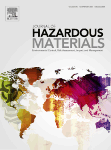 PEREZ CALVO, B.; CANOIRA L.; MORANTE, F.; MARTINEZ-BEDIA, JM.; VINAGRE, C.; GARCIA-GONZALEZ, JE.; ELSEN, J.; ALCANTARA, R. Continuous elimination of Pb2+, Cu2+, Zn2+, H+ and NH4+ from acidic waters by ionic exchange on natural zeolites. Journal of Hazardous Materials, 166 (2009) pp. 619-627. ISBN: 0304-3894.
PEREZ CALVO, B.; CANOIRA L.; MORANTE, F.; MARTINEZ-BEDIA, JM.; VINAGRE, C.; GARCIA-GONZALEZ, JE.; ELSEN, J.; ALCANTARA, R. Continuous elimination of Pb2+, Cu2+, Zn2+, H+ and NH4+ from acidic waters by ionic exchange on natural zeolites. Journal of Hazardous Materials, 166 (2009) pp. 619-627. ISBN: 0304-3894.
Abstract: A study of breakthrough curves for cations usually found in acid mine drainage (Pb2+, Cu2+, Zn2+ and H+) and municipal wastewater (NH4 +) have been conducted on some natural zeolitic tuffs. The zeolitic tuffs used in this study are: three zeolitic tuffs from Cayo Formation, Guayaquil (Ecuador), characterized by Xray diffraction as clinoptilolite (sample CLI-1) and heulandite (samples HEU-1 and HEU-2)-rich tuffs, and two zeolitic tuffs from Parnaiba Basin, Belem do Pará (Brazil), characterized as stilbite-rich tuffs (samples STI-1 and STI-2). The clinoptilolite sample CLI-1 shows an exceedingly good exchange capacities for Pb2+ and NH4 + as received, and also a very high exchange capacity for Cu2+ and Zn2+ when conditioned with 2 M sodium chloride, with much higher values than those reported in the literature for other clinioptilolite ores. A general order of effective cation exchange capacity could be inferred from breakthrough curves on these zeolitic tuffs: CLI − 1 > HEU − 2 > HEU − 1 > STI − 2 Since it is true for most of the cations studied.
